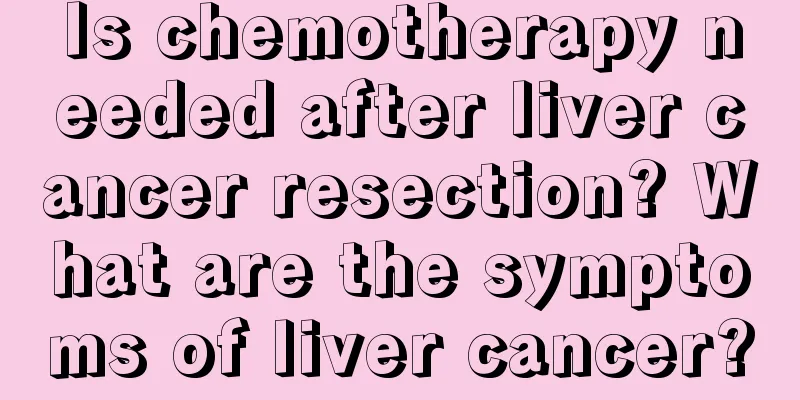Treatment of complications of radiotherapy for lung cancer

|
The side effects that occur within 90 days after the start of radiotherapy for lung cancer are acute radiation damage, which is often self-limiting. Late radiation damage usually occurs 6 to 18 months after the end of radiotherapy and is mostly irreversible tissue damage. 1. The incidence of acute radiation-induced lung injury during radiotherapy for lung cancer is 33%, and 82% of late radiation damage to the lungs is lung fibrosis. The causes of acute radiation lung injury and chronic pulmonary fibrosis are related to large irradiation fields, high doses, and rapid irradiation of the lungs. The treatment of acute radiation lung injury is mainly rest, the use of adrenocortical hormones and bronchodilators, and oxygen inhalation when necessary. Antibiotics must be used at the same time when there is a secondary lung infection. There is no special treatment for mild chronic pulmonary fibrosis, and symptomatic treatment is generally used. Radiation lung injury is a complication that is difficult to control during radiotherapy for lung cancer. The key lies in prevention. During treatment, the irradiation dose, irradiation method, and correct design of the irradiation field should be carefully planned according to individual characteristics. 2. The incidence of radiation esophagitis increases with increasing dose. Radiation esophagitis is relatively common. Pain during eating at a radiation dose of 10-20Gy is mainly a reaction of the esophageal mucosa. Pain at 30-40Gy may be a reaction of the esophageal muscle layer and the tissues around the esophagus. If the pain symptoms are mild, no treatment is required, and continued radiation may relieve them on their own. For severe pain, mucosal surface anesthetics such as 1% procaine solution can be taken orally, or antibiotics can be used. Radiotherapy should be suspended for severe pain. There is less esophageal damage in the later stage, but the literature has reported esophageal stenosis, adhesions, ulcers, and fistula formation, which often occur when the total dose received by the esophagus is >70Gy. 3. The incidence of cardiac damage caused by radiotherapy increases with the increase of radiotherapy dose. When the irradiated volume of the heart exceeds 60% and the dose is greater than 40Gy, about 5% of patients develop complications such as pericarditis, pericardial effusion, myocarditis and fibrosis. When the dose is above 60Gy, the incidence is 50%. Acute radiation-induced heart damage during radiotherapy for lung cancer is often subclinical, and abnormal electrocardiograms can be found, with ST-T changes being the most common, followed by atrial premature beats, ventricular premature beats, atrial fibrillation, sinus tachycardia and sinus bradycardia. Atrioventricular conduction block and abnormal Q waves are rare. Those with previous abnormal electrocardiograms may have their symptoms aggravated after radiotherapy. Elderly people have more heart changes than young people. For those with myocardial insufficiency or arteriosclerosis, the radiation dose to the heart (mainly the left ventricle) should be reduced. 4. The main symptom of radiation myelitis in the early stage is numbness of the limbs like electric shock, especially when the patient bows his head. It usually occurs 1 to 10 months after radiotherapy for lung cancer, with an average incubation period of 3-4 months. The condition can be controlled and recovered by using a large amount of vitamins and nerve cell nutrition drugs, as well as adrenal cortex hormones. In the late stage, it is mainly spinal cord transverse injury, manifested as transverse paraplegia, which occurs more than 1 year after radiotherapy. As long as the radiation dose of the spinal cord is controlled within the safe range of less than 50Gy, 25 times, and 5 weeks, this complication generally will not occur. As the number of lung cancer patients in my country continues to increase, the treatment and prevention of lung cancer cannot be underestimated. The above is a brief introduction to the types of lung cancer. People with lung cancer-related pathogenic factors are advised to take preventive measures for lung cancer and follow the doctor's instructions to receive specific treatment. I hope that patients can recover soon! If you have other questions about lung cancer, please consult our experts online or call for consultation. Lung cancer http://www..com.cn/zhongliu/fa/ |
<<: Precautions for radiotherapy care of brain cancer patients
>>: How to prevent liver cancer?
Recommend
Can umbilical cord blood cure brain cancer
Umbilical cord blood can treat malignant tumors. ...
Is it dangerous to have brain cancer?
What harm does brain cancer bring to patients? Pe...
What are the methods to relieve itchy skin
There are many reasons for skin itching. It is a ...
How to judge the recurrence of osteosarcoma
Osteosarcoma is highly malignant and can metastas...
What is the reason for the pain in both temples
In life, we often experience pain in the temples ...
Shaobing and dough making skills
Shaobing is a delicious pasta-based food that is ...
What to eat in the late stage of liver cancer? Four types of food are suitable for late stage of liver cancer
The harmfulness of liver cancer cannot be ignored...
How long does it take for internal organs to react after being injured
The harm caused by internal organ injury is relat...
How to use pearl powder
Pearls are very common in our daily lives. What w...
Is cinnamon the same as longan
The names of many foods are very similar, and som...
The harm of coffee mate
Many people like to add coffee creamer when drink...
What to do if there are dry scabs in the nostrils
If our nostrils are dry and scabbed, we will ofte...
Experts explain the methods of treating lung cancer
Lung cancer is a common disease in our lives, but...
Should women take off their underwear before sleeping at night?
Sleeping is the most relaxing time for the human ...
How often should I wash my hair with Platycladus orientalis leaves
There are many functions of Platycladus orientali...









